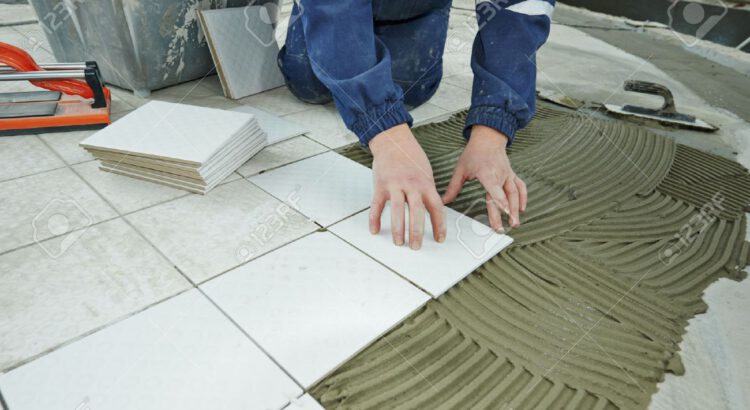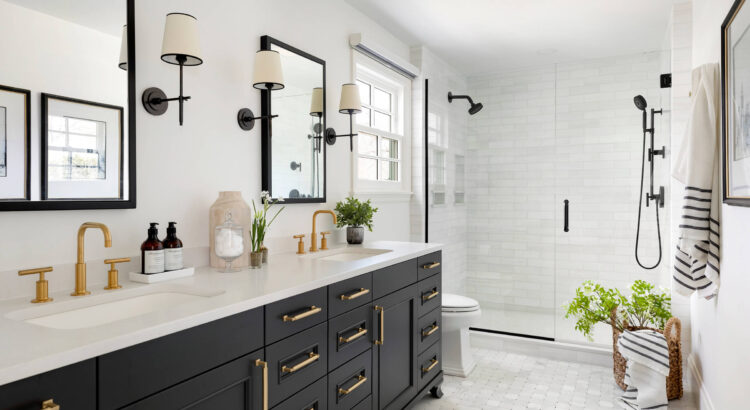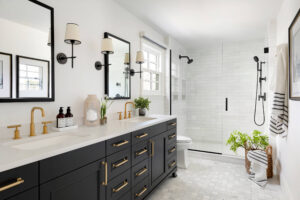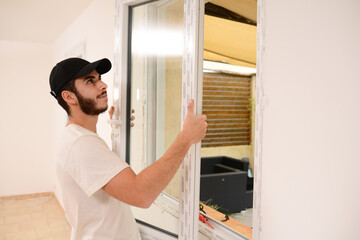Bathroom Remodeling Milwaukee can transform any room into a beautiful and relaxing space. It comes in various materials, so homeowners can choose the look and feel they want.
Many tile materials come in a variety of shapes. For example, some tiles can be cut on a diagonal, creating a more modern or unique look.

One of the most important aspects of a tile renovation project is thoroughly cleaning all surfaces, particularly floors and grout. If not done properly, residues left behind from construction dust and grout haze can dull or damage the tiles. Cleaning tiles after renovation also helps ensure a long lifespan and prolongs the beauty of the new surface.
Using a vacuum cleaner with a brush attachment is advisable to clean the floor before it is mopped. Vacuuming the floor can help remove loose dirt, debris, and residual adhesives or cement. Then, a mop can be used with hot water and a mild cleanser to clean the tiles and grout. Always follow the manufacturer’s recommendations for cleaning products to avoid damaging or staining the tiles and grout.
After the floors have been cleaned, a final cleanup is needed on the walls. Construction dust, primer stains, and other residues can mar the walls of a room. If these are not properly removed, they can impede proper wall installation and lead to permanent damage.
If there are any primer stains, you can use a solvent like acetone to remove them. However, testing this in an inconspicuous area first is important to ensure it doesn’t damage the tile.
Tile is a versatile and durable material used on walls, floors, or ceilings. It comes in many different styles to suit any home decor. Choosing the right style for your bathroom is an important step in a successful tile renovation project. Consider your design preferences and your home’s unique style to help you choose the best tile for the project.
Before removing the old tile, ensuring your subfloor is ready for the new flooring is important. This will ensure the new floor has a solid foundation that can support the weight of your tiles. If you skip this step, you may damage the subfloor or experience problems with the new tile installation.
It’s also important to prepare the subfloor for tile by looking for and addressing any problems like low spots, water damage, or rot. This can help you avoid future issues with the new floor installation and save money on costly repairs.
You’ll also want to clear the space of any free-standing objects and remove any baseboard trim. Wearing a dust mask during this process is a good idea, as broken tile shards can be dangerous. Consider sealing off your vents to prevent the air from becoming clogged with debris.
Lastly, you’ll want to sweep and vacuum the area. This will eliminate any small pieces of tile and adhesive that might have fallen off during removal. Using a citrus-based adhesive remover that can also be purchased at most home improvement stores is a good idea.
The best way to remove the tile is by starting at the edge of the room, where you can access the underlayment plywood. Once you have a good grip, hammer the flat end of your pry bar underneath one of the larger tile pieces and break it loose. Then, you can chisel the rest of the tile and any remaining adhesive. Be careful to do this sparingly; you want to avoid chiseling through your underlayment or subfloor.
New tiles can add a fresh look to any room, whether on the floor or wall. But when it comes to renovating a bathroom, there are a lot of decisions that have to be made. It’s important to consider the materials and color options and how they will be installed. The final result should be beautiful and functional.
One of the first steps is deciding how the tile will be cut and where it will be placed. Photographing the space and determining how much tile is needed is also helpful. This will help avoid that sinking feeling when you run out of tile halfway through the project.
If you use a tile cutter, scoring the tiles before cutting them is best. This helps ensure a clean cut and can prevent the edges from becoming chipped or rough. This can be done by aligning the square (a ruler shaped like a right angle) with one edge of the tile and using a pencil to draw the guideline. This method is best for bigger jobs that require a lot of cuts.
Before beginning the actual work of installing the tiles, it’s important to make sure that all of the power is turned off and any electrical outlets are covered. Place outlet extenders in the wall outlet boxes is also a good idea. This will allow you to continue working later without worrying about accidentally touching live wires.
When tiling a floor, ordering 10% more tiles than you will need is generally recommended. This will allow you to have extra for broken tiles or miscuts or cut for awkward angles. Having a little extra can also be beneficial if your space needs to be bigger for the full-size tile you want to use.
A tile renovation project is a significant home improvement that requires the right materials. The correct adhesive helps the tiles stay securely bonded to the walls or floor. Choosing the wrong type of tile adhesive can lead to loose tiles that require replacement or damage that needs repair.
Before you begin applying tile adhesive, you must prepare the surface. Ensure that it is free of dust, debris, and loose paint. Clean the wall and remove any fixtures that may get in the way of your tiling project. If needed, sand or scrape the wall to create a flat surface.
There are two prominent types of tile adhesive: pre-mixed and thinset mortars. The one you choose will depend on whether the area will be subject to moisture, movement, or heat.
If you’re using a pre-mixed adhesive, it’s recommended that you use a primer before you apply the tile. This prevents the surface from absorbing the water in the tile adhesive, which can reduce its bonding strength and longevity.
Once you’ve mixed the tile adhesive, it should be spread with a trowel. It’s important to spread evenly across the entire surface before laying tiles. Comb the adhesive with the trowel’s notched edge to do this. This makes ridges that allow for more grip between the tiles and the wall.
It’s also a good idea to work quickly when spreading the adhesive. It sets quickly, so work in small sections to avoid wasting the mixture. Once you’ve applied the adhesive, please wait for it to dry before laying your tiles. To speed up the drying process, you can use a fan or a hairdryer to blow air over the area.
Before you can start laying the tiles, you need to prepare your supplies. Make sure you have plenty of tiles (in the style that best suits your design preferences) and thin-set adhesive. Thin-set is a mortar-based glue typically made from cement, fine sand, and water-retaining additives such as cellulose. Home centers and specialty tile shops usually stock most standard styles, but you may need to place special orders for more exotic tile designs. Estimate the amount of tiles you need based on the square footage of the wall surface, then pad that figure by at least 10 percent to allow for waste and breakage.
When installing the tiles, take the time to carefully check your work to ensure there are no loose or uneven spots. If necessary, strip the previous tile to remove any areas of concern. It would be best to consider re-stripping the walls to clean off any residual moisture and mildew that may have developed.
Plastic spacers keep the joints uniformly spaced as you lay your new tile. The spacers should be placed between each row of tiles and offset by one-half the tile width to maintain a running bond pattern.
Some tiles have directional arrows on their back. When laying these tiles, always keep the directional arrows facing in the same direction to help you maintain consistent pattern alignment.
When you’re finished laying the tiles, leave an expansion gap as the tile manufacturer recommends. This will help prevent cracking once the grout is applied.




